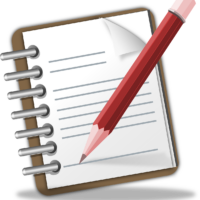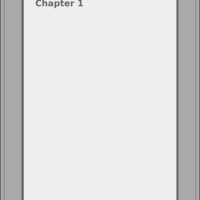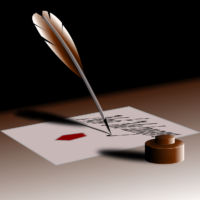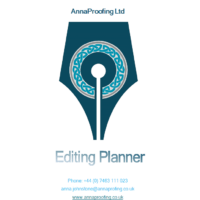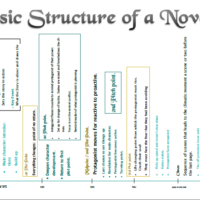by Anna Johnstone | Sep 25, 2017 | Advice, Service
A lot is said about how to find the right editor for you but today’s post is about being a good client. I had not intended for this to be this week’s post but given the circumstances, I thought this needed to be said.
Most of us know by now that the business relationship runs both ways. It should be one of mutual benefit and courtesy. Most of you know you need to be polite to editors when introducing your work, and they know to be tactful and treat your work with respect and discretion. Most of you know that most editors are very busy and cannot simply drop everything to make your work an immediate priority, but we still try to be polite when dealing with even the most ‘urgent’ projects. However, there are times when we meet those who don’t know these things, and today was one of them. I would like to draw from my own experience for an example of how not to introduce yourself to an editor. I will not name names. Doing so would be unprofessional and serve no purpose other than to exacerbate the problem, However, I do not feel that ignoring this experience will do any good either. For the moment there are two things authors need to remember;
- Good customer service does not mean being a doormat and accepting poor treatment just to get the client. Good customer service requires effort on behalf of the client too.
- Editors talk… A lot… About everything…
A few days ago I received an unsolicited ‘friend’ request from a member of one of the many writer’s groups I am a part of on Facebook. Recognising the name and thinking it’s about editing as it came on that profile, I accepted it and sent an invitation to my editor’s page to let them know it is there. This is not the same as a ‘request’ and people are free to decline it. I had thought nothing of it since given that my service has been closed for the last few days following the sudden death of my father. It strikes me that if he had really read my page he would have seen my pinned post. I digress…
Today I have experienced possibly the worst example of entitled behaviour since I started fourteen months ago. I arrived at my page to check my messages to find a personal message (not to the page, but to me personally) to say that they had liked my page and would I now like theirs “Only if deserved”. I didn’t get a chance to tell them that I was rather busy and would take a look when I had time because when I gently pointed out that my service page does not engage in like-swapping he began hounding me to just follow the link to his page and hit ‘like’ (even the most technologically naive of us should know not to ‘just follow’ any link.) just because he had liked mine. He had not used my service or put work my way so I am surprised he did. When I told him his behaviour to me was aggressive, he threw a tantrum that would have embarrassed Super Nanny; accusing me of spamming him, even though I explained that the invitation was only that; an invitation, and telling me not to buy his book. At no point did I say I would not like his Facebook page, but I was not given the opportunity to say that I would take a look when I had time because I was blocked before I could and simply because I would not drop everything and give him exactly what he wanted when he wanted it. He wanted me to like his page as an endorsement to his work without ever having read it.
In a way, I am sort of glad that this client has exposed his nature as a difficult client before I had to deal with him. This person is not the type of client this service is looking to engage with. Nor will it be. Ever. What did he do wrong, you ask? Firstly he assumed that he had an automatic right to my time and attention and that I should be grateful for his and jump to his will. It would take me time to go to his page and read his work. Time that I just don’t have this week. Yes, his primary introduction was fairly polite but his tone and demeanour changed to one of affronted aggression the moment things did not begin to happen exactly as he would like. That was his second mistake.
Remember, that editors are more than merely a living spell checker. We have lives and we have self-respect and we talk to each other. We know who the merely difficult clients are. We also know who the ones to avoid are. This is the beauty of being a freelancer. We have the privilege of choosing who we deal with. Imagine he had behaved that way to waiting for staff or someone at a call centre who did not have that option? It is not okay to treat anybody that way and if the cost of not putting up with it means one less rude or difficult client then that price is worth it.
![Commas: when to use them and when to let them have a break.]()
by | Dec 9, 2016 | Advice, Blog
We all love them. Those little marks have the power to change the whole tone of a sentence. They have power and making good use of them is important. We’ll not go into using their often abused cousins; the apostrophe. That’s a different subject entirely has been done to death but f you would like an explanation on the rules of the apostrophe let me know. Unless you are writing a musical score for the brass section of an orchestra it’s not, contrary to popular view, correct to just chuck them in wherever you think a breath or a pause should be. The reason I’m posting this is that I find myself grinding my teeth more and more and, frankly, I just can’t afford the dental bills now.

Sad comma has been abused…
The basics.
This will be a long post so please bear with me. For the sake of brevity, I shall divide it by type with explanations and finish with a simple ‘Dos and Don’ts’ summary.
Commas come in several forms:
- Listing
- Joining
- Gapping
- Bracketing
They all have their own uses and own rules of application. They are not to simply be applied ‘wherever you might pause’. Stop that. Really. It’s as bad as not using them at all.
The One Ring Rule.
This applies to all commas, no matter their type, and bind them into a nice neat bundle. Yes, It’s a weak pun. No, I’m not sorry. Let’s get on with this shall we?
A comma is never preceded by a space, but always followed by one.
I know it’s obvious but I have seen it used this way. Poor little things left, floating in a sea of unexplained space, all by themselves.
Listing commas
These are used in lists of more than two items/people/places/actions. It can also be used to join sentences where they are connected by the word and.
Examples:
- Porthos, Aramis and Athos were Musketeers.
- German is spoken in Germany, Austria and Switzerland.
- You can fly to Bulawayo via Addis Ababa, via Harare or via Johannesburg.
- Sarah speaks German, I speak English and Magda speaks Polish.
Replacing some of these commas with the word and would sound clumsy and awkward. Three or more complete sentences can be easily combined with listing commas, (example 4), but it should be noted that there is a difference between the American and British usage of listing commas. While it is usual for a comma to precede the final and in US English this is not the case in British English. The comma is meant to be a substitute for the word and, not an addition. Look out for this as many spelling and Grammar checkers don’t pick this up. Here’s the fun exception: if it would clarify your meaning, then it is encouraged to make an exception.
“My favourite composers are Handel, Mozart, Johann Strauss, and Gilbert and Sullivan.”
Without that final comma, the statement might be unclear to someone unfamiliar with classical music. It shows that Gilbert and Sullivan worked in partnership while the others worked alone. A listing comma is also used within in list of modifiers which all refer to the same subject. There will usually be no conjunction (and) as this can be replaced by a comma without losing any sense of the subject.
It changes “This is a dark and disturbing book” to “This is a dark, disturbing book.”, and “His long and dark and glossy mane shone like a water fall.” to “His long, dark, glossy mane shone like a waterfall.”
Joining commas
There is a slight difference here. Where a listing comma removes superfluous words, this comma can join two complete sentences but only if it is paired with the suitable conjunction:
Examples:
- You must submit your essay by Friday, or it will not be graded.
- England had long been isolated in Europe, but gradually began to find allies.
- The weather today has been wet and cold, and tomorrow is due to be the same.
However, this does not mean that each time these words appear in a sentence they should automatically be preceded by a comma. One of the most common errors is the failure to observe this rule. It is also one of the easiest to avoid. Either the comma must be followed by one of the aforementioned joining words or the comma should be replaced by a semi-colon.
There are also connecting words which should never be used after a comma.
- While
- However
- Therefore
- Hence
- Consequently
- Thus
- Nevertheless
- Because
Gapping commas
Gapping commas show that one or more words have been left out when the missing word would simply repeat words used earlier in the same sentence.
Some Norwegians wanted to base their national language on the speech of the capital city; others, on the rural countryside.
The gapping comma example shows that ‘wanted to base their national language’ would have been repeated. These are not always necessary and may be left out if the sentence is clear.
Bracketing commas
These are also known as isolating commas. These have a very specific role and are the most often used. For this reason, they are also the ones most often used wrongly. There are some simple rule which can avoid this.
- Bracketing commas should always be used in pairs.
- Only use them to separate a minor interruption in the sentence which does not damage its flow.
The minor interruption should be removable without affecting the meaning. That is, the sentence should make sense without it. observation of this principle should enable you to avoid basic errors and easily self-edit your own punctuation. If you have found that you have used bracketing commas around information that cannot be removed without destroying the clarity then something is wrong. You need to bin those superfluous commas and consider rephrasing. Don’t go the Harold Ross route and throw commas at your work by the fist load.
The rules of bracketing commas can be broken down quite simply:
- A restrictive clause is required to identify the subject and is never enclosed within bracketing commas. These contain the context without which the sentence would not make sense.
- Non-restrictive clauses are not required to identify subject. These always receive bracketing commas because they merely add extra information to a sentence.
Summary
- Don’t be profligate with commas. Overuse is as bad as under-use.
- Be sure why you are using a comma. ‘Because it looks right‘ is not a good reason. If you are writing for publication you can be certain that at least one reader will notice basic errors and will care enough to point out poor punctuation in a very public review.Write as though someone who knows the rules will be reading your work. A good editor will pick these bad habits, and they are bad habits, up and call you out on them. It might be an idea to throw a few deliberate errors into your sample edit pages just to see if they spot them. If they do not bring them up, that should be an alarm.
- Only use a joining comma to combine two complete sentences, and only use it with and, or, but, yet or while.
- Don’t rely on Grammarly Don’t be lazy. Your chosen craft requires you to have at least a basic understanding of punctuation. It doesn’t have to be perfect or instinctive: that’s what fastidious weirdos like me are for. The safest bet is to learn or revise the rules, and stick to them. My own exploration of that particular ‘labour-saver’ has revealed that it cannot always distinguish between versions and often makes incorrect suggestions.
Sources
- Truss, L. (2003), ‘That’ll do, Comma‘ in Eats, Shoots and Leaves, Profile Books, London
- Trask, R. L. (), ‘Chapter 3′ in The Penguin Guide to Punctuation, Penguin, London



